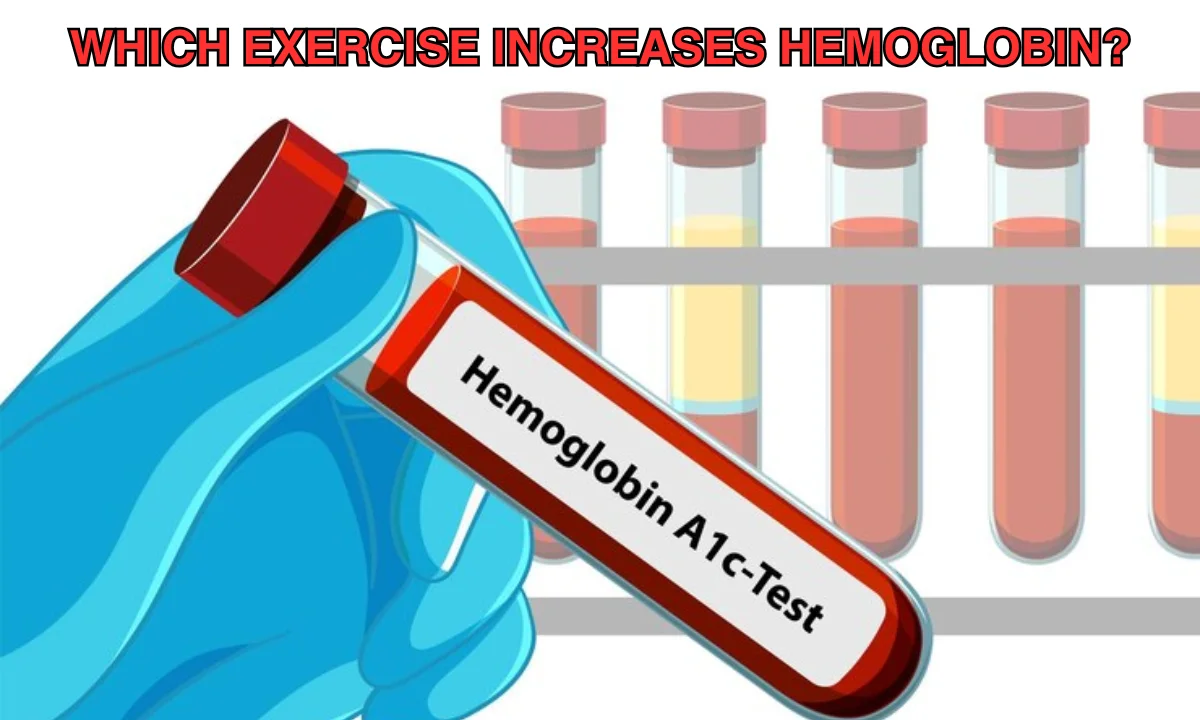“Discover which exercise increases hemoglobin with these 4 proven answers. Boost your blood health and oxygen levels naturally through targeted workouts.”
Introduction
The red blood cell’s protein called hemoglobin plays an important role in ferrying oxygen to different parts of the human body. Low levels of hemoglobin result in anemia and this is characterized by fatigue and weakness. Hemoglobin levels can be boosted naturally through exercise because physical activity encourages the production of red blood cells. Below are more detailed insights into which kinds of workouts are the most beneficial.
Which exercise increases hemoglobin?
Exercises that increase hemoglobin levels include walking, jogging, cycling, swimming, and weight training. They promote the synthesis of red blood cells and enable appropriate blood circulation. While strengthening workouts raise the overall demand for oxygen by muscles, which puts pressure on hemoglobin formation, most aerobic activities enhance the body’s supply of oxygen. Workout and increased iron, vitamin B12, and folic acid intake are always advised when low hemoglobin is gradually developing.
Kind of Exercises That Increase Hemoglobin
Aerobic Exercises:
Examples: These include jogging, biking, swimming, and fast walking.
Benefits: Aerobic exercises help improve the strength of the heart and veins, facilitate the formation of red blood cells, and also increase hemoglobin. Research shows that aerobic exercise brings the process of hematopoiesis, the production of blood cells, up a notch.
Strength Training:
Examples: Lifting weights, resistance band training, as well as cardio exercises such as squats or lunges.

Benefits: The current review also affirms that strength training leads to enhancement in the concentration of hemoglobin mass and overall fitness levels. It can improve muscle mass and have a relationship with greater red blood cell concentration. Strength training should be done at least 2 times a week for good results.
High-Intensity Interval Training (HIIT):
Examples: High-intensity sessions that are separated by low-intensity sessions or breaks.
Benefits: HIIT can help improve the oxygen-carrying capacity of blood, increase heart rate, and establish an improved rate of erythropoiesis. Perhaps this training might enhance erythropoietin output and status since the intensity elevates the physiological structure the training encourages.

Mind-Body Exercises:
Examples: yoga and tai chi.
Benefits: These exercises are not directly associated with raising the levels of hemoglobin, but lowering stress levels and accomplishing relaxation is an important aspect in enhancing general fitness and, in turn, improving how oxygen is utilized in the body.
- How to Cancel My Planet Fitness Membership in 2025
- How many calories should I eat to lose weight?
- How many mental health professionals are in the US?
- Skin Care During Winter: 7 Essential Tips to Keep Your Skin Healthy
- How did Elon Musk lose weight so fast? 5 Secrets – You Won’t Believe What He Did!
- How Does Weight Loss Affect Your Face? 6 Unexpected Effects
- Does Baking Soda Kill Dandruff? 5 Proven Methods Explained
- Which Yoga Is Best for Beginners? 6 Easy Poses to Start With
- Are Exercise Bikes Bad for Your Knees? Experts Reveal 3 Insights
- Are Workout Apps Worth It? 5 Unexpected Benefits Revealed
- Can You Repair Hair Follicles? Discover the 5 Best Treatments
- How many yoga studios in the US? Shocking Fact – 42,000+ Studios
- Does oily skin age slower? 3 Shocking Signs
- How Dry Skin Can Be Cured? 4 Proven Ways
- Why do I have oily skin all of sudden? 9 Unexpected Causes
How Exercise Affects Hemoglobin Production
The body’s ability to hold oxygen on its hemoglobin also increases because physical activity makes the bone marrow produce more red blood corpuscles. The mechanisms include:
Increased Erythropoiesis: This brings about a host of benefits as exercise enriches the hematopoietic microenvironment within the bone marrow, resulting in the production of more red blood cells.
Hormonal Response: Studies show that PT activates hormones that produce red blood corpuscles, such as erythropoietin hormone.
Improved Circulation: Blood circulation is increased when exercising to improve the delivery of oxygen to the tissues and thus general well-being.
Conclusion
When incorporated into one’s regimen, cardiovascular, strength training, HIIT, and mind-body workouts will raise hemoglobin levels. Exercise not only raises hemoglobin levels but also improves the patient’s behavior and overall health. People who have low hemoglobin or anemia should engage in minimal exercise, and it’s best to consult a healthcare professional before exercising.
Which exercise is best for hemoglobin?
Endurance activities, such as jogging, cycling, and swimming, should be the best bet for raising hemoglobin levels. They help to increase the blood flow and increase the number of red blood cells so oxygen delivery is improved throughout the body.
Can exercise raise hemoglobin?
Yes, exercise does increase the level of hemoglobin since the blood positively responds to any form of exercise because it increases the production of red blood cells. Rhythmic activities such as aerobic and strength training increase the supply of oxygen. It improves the highest level of blood oxygen-carrying protein called hemoglobin.
How can I raise my hemoglobin quickly?
For increased hemoglobin levels, participate in aerobic exercises as often as possible. Consume food with iron content such as spinach, consume red meat, and use iron supplements, but only after consultation with a doctor.
What exercises are good for anemia?
Walking and cycling should be done since they are good for anemia and cause the least stress to blood cells. Strength training also aids in increasing the muscle bulk and the leucocytic count in turn, energy levels are enhanced and the general health condition yields improvement.

